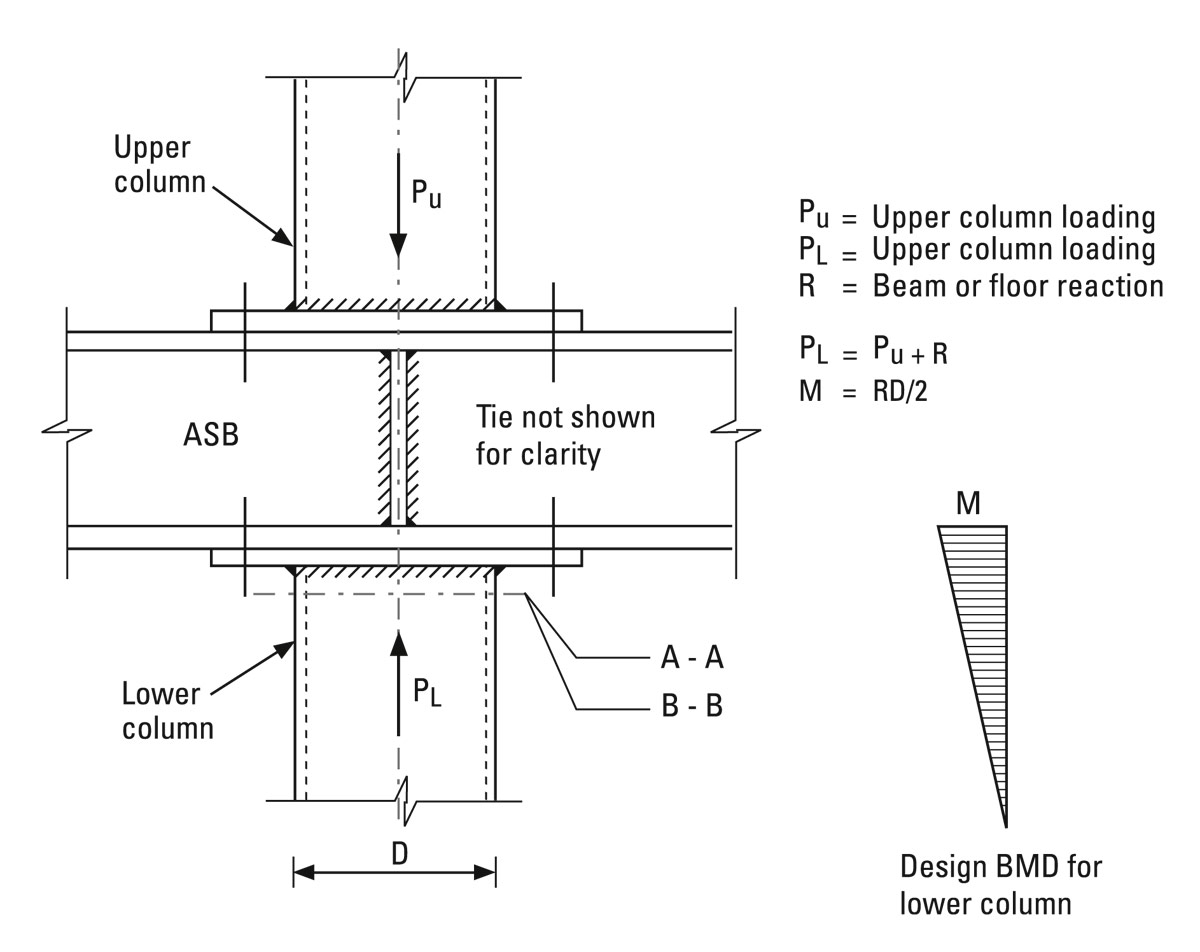Technical
AD 358: Design thickness of cold formed members and sheeting
The purpose of this Advisory Desk Note is to highlight the existence of, and explain the implications of, an important but often over-looked definition in BS EN 1993-1-3:2006 – the design thickness of cold formed members and sheeting. It is crucial that designers use the correct design thickness for cold formed members and sheeting because small differences between design and nominal thicknesses can lead to significant differences in section properties and design resistances.
The definition concerned is in clause 3.2.4 (3) of BS EN 1993-1-3. The wording in the clause is slightly confused but it does provide two expressions for the design thickness, depending on the specified tolerance on thickness. If the negative tolerance on the material thickness, tol, (expressed as a percentage of the nominal thickness) is less than or equal to 5%, expression (3.3a) gives the design thickness as:
t = tcor (3.3a)
where the core thickness, tcor = tnom − tmetallic coatings , in which tnom is the nominal material thickness and tmetallic coatings should be taken as the total coating thickness on both faces.
However, if the negative tolerance, tol, is greater than 5% then the design thickness is given by expression (3.3b) as:
t = tcor × (100 – tol) / 95 (3.3b)
(Note that the above expression corrects a typographic error in the published Standard.)
The tolerances on dimensions and shape for continuously hot-dip coated steel sheet and strip are given in BS EN 10143: 2006. There are two types of thickness tolerance given in BS EN 10143 – “normal” and “special”. The actual tolerance value is dependent on several factors such as the steel grade, nominal material thickness and the width of the strip.
Where “normal” tolerances apply, the negative “normal” tolerance values are generally greater than 5% of the nominal material thickness, meaning that expression 3.3b should be used. Where “special” tolerances apply, although the negative tolerance values are also greater than 5%, according to BS EN 1993-1-3, 3.2.4 (4) the design thickness may be taken as the core thickness, tcor , irrespective of the magnitude of that tolerance.
The designer therefore needs to know, in addition to the nominal thickness and the coating thickness, whether “normal” or “special” tolerances will be specified for coated steel to BS EN 10143. To illustrate the difference between the two alternatives, consider the following example.
Example
Consider a cold formed member manufactured from S350 strip steel with a nominal thickness of 1.8 mm and with a Z275 coating (for which the metallic coating thickness is 0.04 mm).
According to BS EN 10143:2006, for nominal thicknesses between 1.6 mm and 2.0 mm, for a width of strip between 100 mm and 1500 mm, the “normal” tolerance is +/– 0.15 mm and the “special” tolerance is +/- 0.09 mm.
The core thickness is thus:
tcor = tnom − tmetallic coatings = 1.80 – 0.04 = 1.76 mm
Design thickness for “normal” tolerance
The “normal” tolerance of – 0.15 mm is equivalent to 8.3% of the nominal thickness (i.e. tol = 8.3). Therefore, the design thickness is given by expression (3.3b) as:
t = tcor × (100 – tol) = 1.76 × (100 – 8.3) / 95 = 1.70 mm
Design thickness for “special” tolerance
It might be noted that the negative tolerance is equivalent to 5.0% of the nominal thickness (i.e. tol = 5.0) but, irrespective of its value, the design thickness is given in this case by expression (3.3a) as:
t = tcor = 1.76 mm
Specification of different positive and negative tolerances
The approach described above to determine design thickness is based on the assumption that the positive and negative tolerances for the material thickness are the same, which is true when either “normal” or “special” tolerances in accordance with in BS EN 10143: 2006 apply. However, it is common practice to specify material with different positive and negative tolerances. Where this is done, the value of tnom should be taken as the mid-point of the extreme values, rather than the specified nominal value. The negative tolerance tol should then be taken as the difference between the modified nominal thickness and the extreme minimum thickness.
Consider the above example but with a positive tolerance of 0.0 mm and a negative tolerance of 0.1 mm. The minimum and maximum thicknesses to this specification are thus 1.70 mm and 1.80 mm, respectively, giving tnom = 1.75 mm. The core thickness is thus given by:
tcor = tnom − tmetallic coatings = 1.75 – 0.04 = 1.71 mm
The negative tolerance from the mid-range of nominal thickness is 0.05 mm, which is equivalent to 2.9% of the nominal thickness (i.e. tol = 2.9). Therefore, the design thickness is given by expression (3.3a) as :
t = tcor = 1.71 mm
Contact: Andrew Way
Tel: 01344 636525
Email: advisory@steel-sci.com











